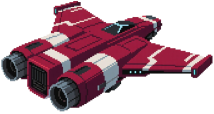Explore >> Select a destination

|
You are here |
science.nasa.gov | ||
| | | | |
asd.gsfc.nasa.gov
|
|
| | | | | I get a lot of questions asking why the James Webb Space Telescope is infrared, and how its images can hope to compare to the (primarily) optical Hubble Space Telescope. Why would NASA build something that isn't going to capture beautiful images exactly like Hubble does? The short answer to this is that JWST will absolutely capture beautiful images of the universe, even if it won't see exactly what Hubble does. (Spoiler: it will see a lot of things even better.) There are legit scientific reasons for JWS... | |
| | | | |
plus.nasa.gov
|
|
| | | | | "Moon 101" is a series that features interviews with Apollo-era rocket scientists and engineers telling their stories about how they did it and lessons | |
| | | | |
jwst.nasa.gov
|
|
| | | | | James Webb Space Telescope | |
| | | | |
thatsmaths.com
|
|
| | | There are five sweet spots where a spacecraft can keep pace with Earth as both orbit the Sun. They are called the Lagrange points, after the brilliant French mathematician Joseph-Louis Lagrange who found special solutions to what is called the "three-body problem". To locate the second Lagrange point, L2, draw a line 150 million km... | ||




